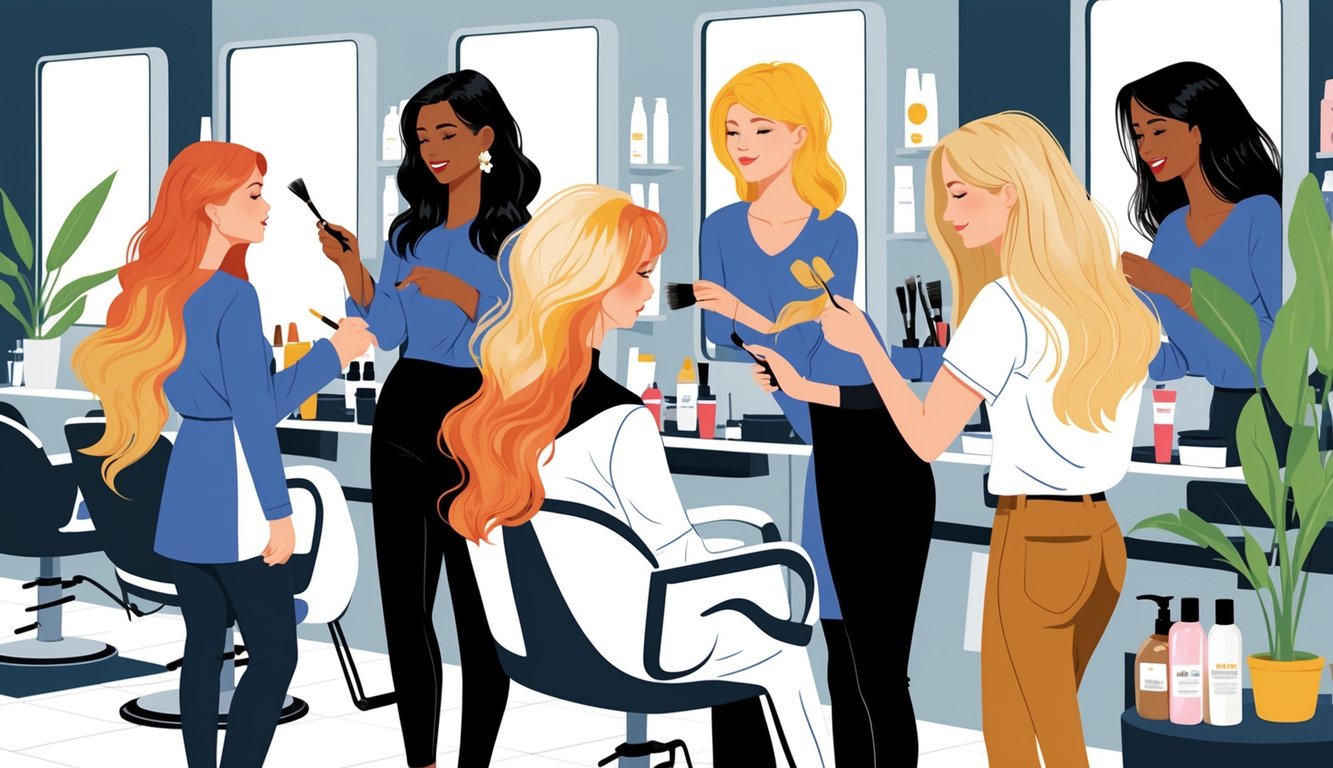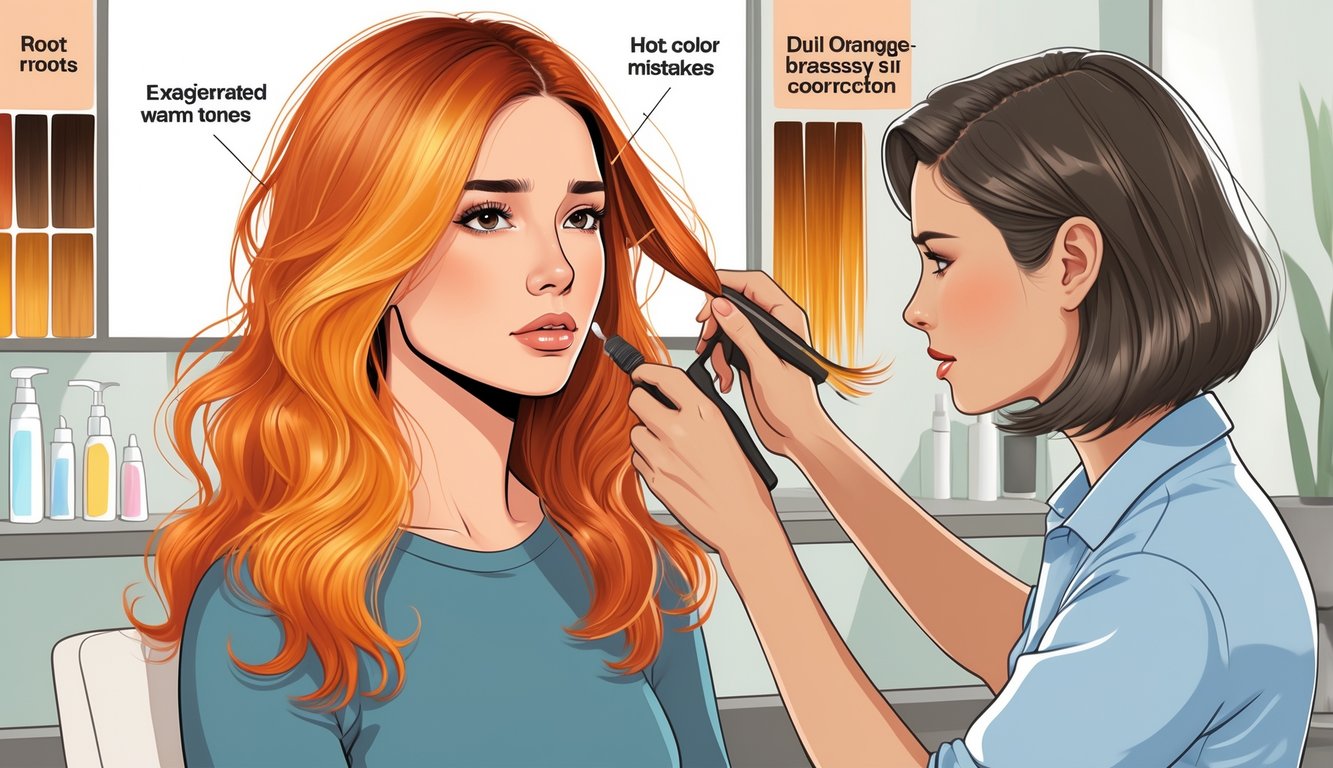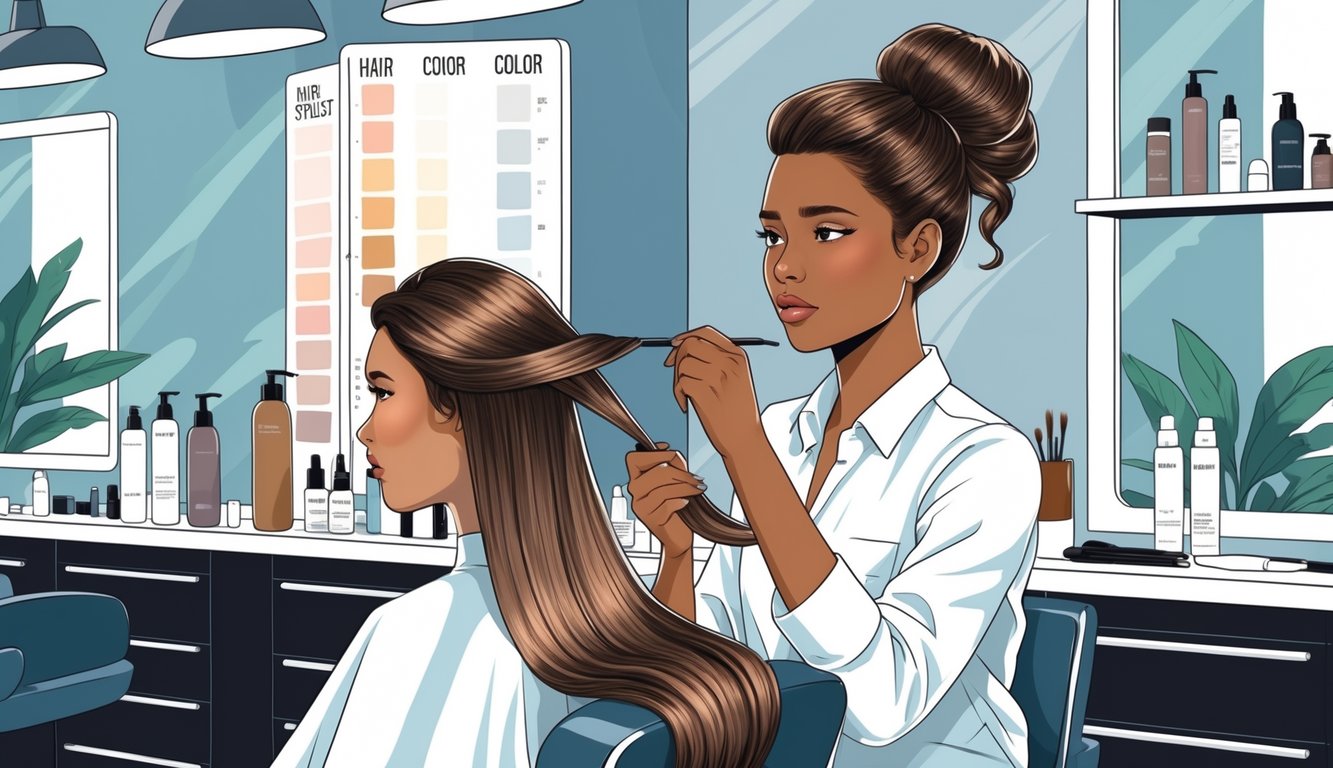
Dangers of Over-Processing and Bleaching
Saw someone practically cooking their hair at a party last week—no, really, it looked and smelled like burnt popcorn. If your hair feels like straw, you’ve gone way past what even Olaplex can fix.
Common Over-Processed Hair Issues
Over-processed hair isn’t just “a bit dry.” I watched one client almost cry after seeing the breakage around her hairline—her updo looked like a hedgehog. “Did you forget to mention last week’s flat iron marathon?” I asked, already planning a year’s worth of deep conditioning treatments.
Here’s the ugly truth: over-processing means weak bonds, frizz for days, color that fades in a week, and that “why is my brush full of hair?” panic. Bond-building stuff like bis-aminopropyl diglycol dimaleate helps, but if your hair snaps every time you touch it, let’s be real: no mask undoes months of chemical chaos. Stylists rant about this for a reason. Some days, I’d rather use a grocery bag than a brush.
And don’t even ask about layering color over pre-lightened hair. If you skip timing or don’t check the base, you’ll get random patches that no one can fix. Healthy hair shines, but if you push too hard, it just breaks. Damage and breakage are basically guaranteed.
Bleach Mistakes and How to Avoid Them
Everyone thinks they’re a bleach pro after one TikTok. No one mentions the burning until their scalp’s on fire and they’re texting at midnight about purple shampoo. Bleach isn’t a dye—it’s a remover. “I’ll just leave it on longer for lighter hair”—sure, and you’ll also hide your hair under hats for a year.
Salon pros use exact developers, timers, and map the whole head. Box bleach? Nope, none of that. Dermatologists say overexposure to persulfates and ammonia causes real burns, but honestly, who does a patch test? No one.
Bleach doesn’t just stop working at a certain point—it keeps eating your hair’s keratin until you rinse it out (source). Your hair isn’t self-healing. People try to fix over-bleaching with coconut oil and hope. I lost count of how many times I’ve heard that. If you see smoke, rinse and pray, but just book a pro next time.
How Brassiness and Hot Roots Ruin Your Look

Every time I see that orange haze or someone’s roots glowing brighter than the rest of their hair, I wonder if anyone actually understands undertones. Brassiness sneaks up on everyone, even regulars. Hot roots? Always show up right before a big event, because of course.
Preventing Brassiness
I’ve watched so many icy blondes turn pumpkin after a few weeks. It’s not just hard water or sun—those warm undertones never die unless you fight them. Picking the right color is non-negotiable unless you want to look like a traffic cone. Redken’s colorists are always ranting about porosity tests, and honestly, they’re right. Uneven texture grabs warmth wherever it can.
Clients tell me they rinse with hot water or use clarifying shampoo every week “for shine”—bad idea. That strips out toners. Purple and blue shampoos aren’t just hype: purple for yellow, blue for orange. Salon-grade toners reset brassiness if you actually apply them right. RealSimple stylists say toners neutralize warmth and extend your color, but if you skip UV protection or swim all summer, don’t expect miracles. Brass sneaks up; you either control it or you don’t.
Dealing With Hot Roots
Hot roots—classic sign of rushing application or walking into a salon with roots way lighter than your ends. If your scalp’s glowing, blame heat. Roots develop faster, especially if your ends have been colored before. It’s like a law of the universe: first-timers get hot roots. SALONORY’s technical team says hot roots are even worse on ashy shades—everything looks off.
People use the same color all over, then panic when their roots are neon. It’s not about speed, it’s about matching the underlying pigment. You can’t just slap more color everywhere. I use targeted toners—blue-violet for brassy roots, always matching undertones. Clients hate hearing “don’t overlap,” but if you do, root warmth just spreads. If you’re going DIY, at least pick a toner with the right pigment (TheKitchenPursuits says blue for orange, purple for yellow, always isolate roots, don’t overdo it). Even with a pro, development time is 80% of the battle. Don’t check every five minutes? Good luck.
Skipping the Strand Test: A Stylist’s Pet Peeve

What really drives me nuts? People refusing strand tests. Not bleach, not weird hacks—just flat out “no thanks.” Results never come out even or pretty, especially if you’ve been slathering on random oils, then expect platinum in one go. Most people don’t realize their favorite leave-in is basically a color remover.
Why Strand Tests are Essential
I don’t care how many TikToks say it’s fine—I’ve seen disaster stories in pro salons because someone skipped a strand test. Different hair types, porosity, weird buildup—mix it all and hope for the best. Stylists say not testing is like skipping an allergy test before new skincare. I’ve seen chemical burns, too.
Clients try to bargain—“Can you just fix it with color remover?” Sometimes, no. Sometimes, you’re stuck with an awkward cut and months of deep conditioning. One test strand would save money, time, and a lot of awkward Zoom calls. Just wear gloves, do the test, and ignore anyone promising shortcuts.



